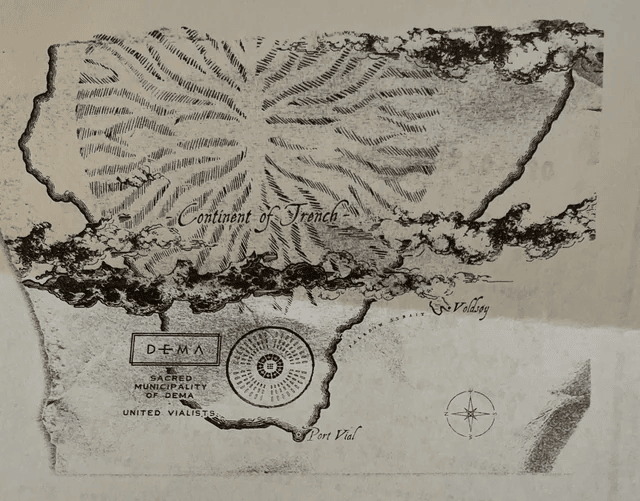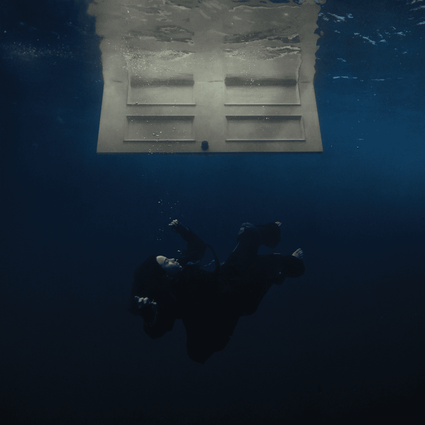In a world where World War II has become a cinematic phenomenon, it’s left up to question how many films and television series based in the era the media truly needs. Stories easily become redundant, and audiences become desensitized to the darkness of WWII. Yet Apple TV’s new limited mini-series, Masters of the Air, has flown to the screen for an astonishingly successful mini-series debut, breaking Apple TV’s watch records and trope stereotypes.
Masters of the Air, a soaring television series of creative genius set during the last years of WWII, grants an inside look into the events of the war. The first episode premiered Jan. 26, with nine following episodes released weekly. Produced by Tom Hanks and Steven Spielberg, and based on real people and true events, Masters finds the untold flying missions of WWII, catapulting them to the shining big screen.
The series, based on Donald L. Miller’s 2006 novel of the same name, follows main characters Major Gale “Buck” Cleven (Austin Butler) and Major John “Bucky” Egan (Callum Turner) as pilots in the 100th Bomb Group of the US Air Force. The two pilots, surrounded by an astounding number of complex side characters, fight their way across the dangers of Europe. Followed by the subsequent storylines of Major Harry Crosby (Anthony Boyle) and Major Robert “Rosie” Rosenthal (Nate Mann), Masters of the Air overlaps multiple crewmember experiences together, ultimately cultivating a balanced mixture of diverse encounters within the war.
The pacing of the series, although quick, allows for hard-hitting, strong, and nuanced character and plot development. The nine episodes fly through two years, spanning 1943-45, and rarely stop to take a break. Through this fast-paced, wind-whipping-through-your-hair lens, the 100th Bomb Group flies over 300 missions, chaotically compiled into a highlight reel style timeline, facing WWII atrocities one by one.
This “highlight reel” not only showcases the upstanding moments in air-fighting WWII, but also equally reveals the horrifying facets, if not more so. Masters of the Air welcomingly abandons the media’s tendency to shy away from the true death toll of WWII. Multiple missions return as failures, more planes go down than fly home, and main characters are subject to sudden, surprising deaths. This chaos in the air and back at base drives the speed of the series, placing viewers directly in the co-pilot’s or bombardier’s seat.
The series unsurprisingly continues the beloved trope of wartime brotherhood; but to new strengths. The main men of the series, Majors Cleven, Egan, Crosby, and Rosenthal lead with robust brawn, but also a beautiful sense of comradery, loyalty, and determination, if not to a fault. Throughout their many trials on land and air, they continually fight for each other, showcasing the true heart at the core of the tale, punctuated by their diverse entourage of flight crews.
The perspective-shifting entourage proves perhaps the greatest accomplishment of the series. Placed in contrast to beloved works such as film Saving Private Ryan or TV series Band of Brothers, the previously told stories focus dependently on relationships between company members, the paratroopers. Masters of the Air characters move away from this superficial tone. Flipping the script, it frames depictions of strong relationships outside of the flight crews.
The members of the 100th included maintenance crew chiefs, nurses, flight navigators, spies, and other analytics officers. Alongside the tight-knit main characters are these relationships, to the behind-the-scenes individuals, showcasing that without them, there would be no 100th.
Masters of the Air also succeeds in another crucial aspect of any ground-breaking release: harrowing cinematography. Fighting scenes are all purposefully shot from the chaotic view of flight crews, positioned through plane windows, attempting to show how it truly feels to be inside a 1930s Boeing B-17 Flying Fortress. Audiences are subject to the perspective of the flight crews, unseeing of dangers until they appear at their one o’clock. It’s the kind of filming that has you leaning over in your seat to avoid an oncoming fighter, despite being in the comfort of your own home.
One of the few downfalls of the series is the quasi-superficial finale. The speed of the final two episodes leads to timeline jumps, characters without dense development, and long-running scenes that lack much addition to the plot. The speed of the episodes’ timeline does not allow for the depth required to tie off the storyline’s loose ends. It’s almost as if the producers had an excess of ideas, but not enough time to truly dig into them. An extra episode or two would have helped pave the gaps in the road that got skated over.
Included in this perfunctory ending is the embarrassingly short appearance of the 322nd’s Tuskegee Airmen. The only African-American legion of the Army Air Corps, the Tuskegees were the first ever group of African-American soldiers to complete US Army Air Force training. Despite their momentous story, their production seems surface-level, their small and quick emergence having little effect on the overall storyline. This made it appear strangely as if film-makers felt obligated to include them, but opted to show as little as possible. Their emergence in the last moments of episode eight only used to establish Major Cleven as the unrivaled protagonist, the race-blind good guy.
The series has little other distinct issues, besides the superficial character storyline endings, establishing it as a worthy airborne companion to Band of Brothers and The Pacific. Viewers experience the adrenaline rush of fighting in the clouds, quickly followed by the sobering realities of coming back down to earth. With staunchly real cinematography and strong found-family sentiments, Masters of the Air has heightened the standards of WWII biopics, earning itself four and a half out of five feathers.
















